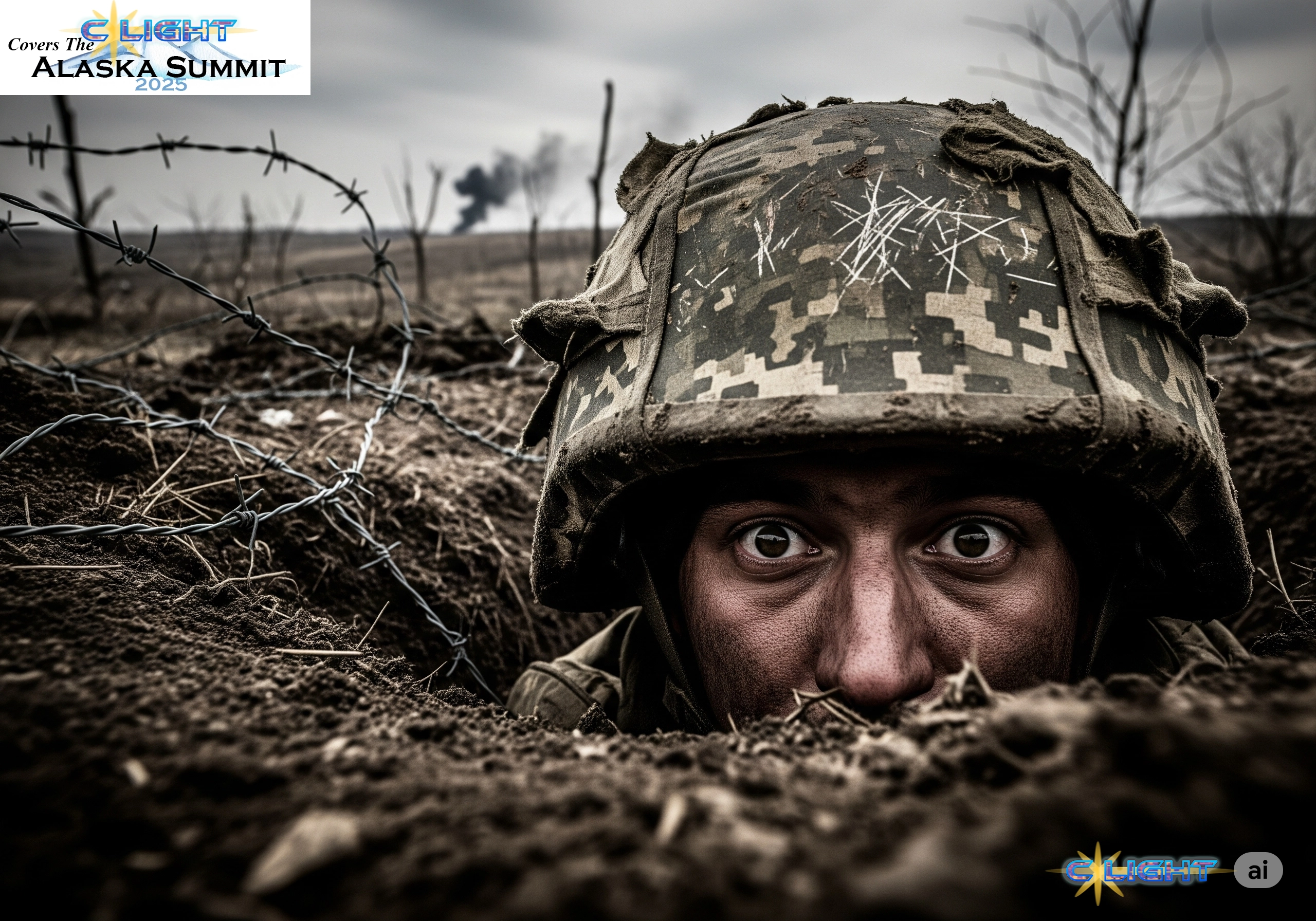5 minutes read time.
Thousands of miles from the choreographed handshakes and sterile, climate-controlled conference rooms of Anchorage, the war in Ukraine grinds on with a brutal, relentless rhythm of its own. While diplomats debate the semantics of a ceasefire and the architecture of a potential peace, the daily reality for soldiers and civilians along the 750-mile front is one of mud, blood, and the omnipresent, high-pitched whine of incoming drones. The summit in Alaska, for all its global significance, is a distant, almost surreal abstraction here. On the ground, in the sodden trenches of the Donbas and the scarred streets of Kyiv, the only tangible reality is a war that has not paused for politics and a deep-seated, battle-hardened skepticism that it ever will.
The timing of the summit is particularly grim when viewed through the lens of the front line. In the days leading up to the talks, Russian forces have escalated their offensive, a clear and bloody-minded effort to strengthen Putin’s negotiating position by demonstrating battlefield dominance. As detailed in a harrowing report from The Guardian, the frontline east of the key railway junction at Dobropillia has been breached. Lightly armed Russian saboteur groups, numbering perhaps 20 to 30 men, have successfully infiltrated Ukrainian positions, threatening a critical supply hub that, just months ago, was a bustling market center considered a relatively safe rear area. This is not a static war of attrition; it is a dynamic and increasingly sophisticated Russian assault designed to create tactical crises and sow chaos.
The invaders’ strategy has evolved from the disastrous armored columns of 2022 into a ruthlessly effective modern warfighting doctrine. The battle today is defined by the systematic elimination of Ukrainian logistics. Russia has become tragically adept at targeting supply lines, making it a life-or-death gamble for Ukrainian forces to receive reinforcements, evacuate their wounded, or even replenish ammunition. The primary tool of this new phase is the FPV (first-person view) drone, which has extended the “kill zone” to a terrifying twelve miles or more. As one Ukrainian soldier recounted, the recent introduction of unjammable, fiber-optic-guided Russian drones has been a devastating game-changer. “They destroyed all the logistics,” a special forces soldier told reporters, describing how the new drones could lie in wait undetected for hours before ambushing any vehicle that moved, leading to a near-collapse of the front in some sections.
This relentless pressure highlights the core, brutal asymmetry of the conflict. In a stunning illustration of the human cost, President Zelenskyy recently provided a snapshot of a single day’s casualties: on the Russian side, 531 killed; on the Ukrainian side, 18. Despite this staggering, almost unimaginable disparity in losses, Russia attacks every day, seemingly willing to absorb immense casualties to gain incremental advantages. This strategy is fueled by a steady stream of financially motivated recruits, lured by salaries and bonuses that are astronomical by Russian standards. This grim calculus is not lost on the soldiers at the front, who face an enemy that appears to have an inexhaustible supply of manpower to throw into the meat grinder.
Back in Kyiv, hundreds of miles from the fighting, the mood is one of profound weariness and deep-seated distrust. While European leaders express cautious optimism about the Felonious Punk’s diplomatic efforts, many ordinary Ukrainians, who have endured over three years of unrelenting war, see the Alaska summit as little more than political theater that excludes the most important voice: their own. “I don’t think this round will be decisive,” Oleksandra Kozlova, a 39-year-old digital agency worker, told The Associated Press. “There have already been enough meetings and negotiations promising us, ordinary people, that something will be resolved, that things will get better, that the war will end. Unfortunately, this has not happened, so personally, I don’t see any changes coming.”

This skepticism is rooted in the fundamental, irreconcilable positions of the two sides. President Zelenskyy has been adamant that he will never consent to ceding Ukrainian territory, viewing any “land swap” as a reward for aggression that would only serve as a launchpad for a future war. His position is backed by a population that has sacrificed too much to simply give in. Yet, the unending strain of the war creates agonizing dilemmas. For many, like Kyiv car salesman Anton Vyshniak, the immediate priority is simply survival. “At the moment, the most important thing is to preserve the lives of male and female military personnel,” he said, suggesting a heartbreaking willingness to consider territorial concessions that the government has flatly rejected.
This is the brutal reality that underpins the diplomatic discussions in Alaska. The conversations about potential deals and security guarantees are occurring against a backdrop of a dynamic battlefield where Russia currently holds the initiative, and in a climate of deep mistrust from a Ukrainian population that has learned through bitter experience to be wary of promises made in far-off capitals. For the soldiers trying to hold the line near Dobropillia and the civilians in Kyiv who have lost hope in negotiations, the war is not a chess game to be resolved by two men in a room. It is a daily struggle for national survival, a reality that will persist long after the summit in Alaska has ended and the world’s attention has moved on.
Discover more from Clight Morning Analysis
Subscribe to get the latest posts sent to your email.










